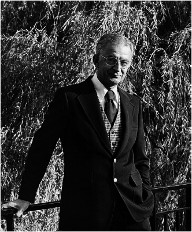-
(b.) -1915(d.)1990 November 14
Bio/Description
A German-born cryptographer who worked on the design of ciphers at IBM, initiating research that culminated in the development of the Data Encryption Standard (DES) in the 1970s. Born in Berlin, Germany he moved to the United States in 1934. He obtained a Bachelor's degree at MIT, and his Master's degree at Harvard, both in Physics. He married Leona (Gage) in 1945 and they had one daughter. During World War II, he was placed under house arrest, but nevertheless gained U.S. citizenship on January 31, 1944. The following day he was granted a security clearance and began work for the U.S. Air Force Cambridge Research Center (AFCRC) on Identification Friend or Foe (IFF) devices until the 1950s. He was subsequently employed at MIT's Lincoln Laboratory, then the MITRE corporation. Finally, he moved to IBM, Yorktown Heights, New York where he received an award for his cryptographic work. He was one of the earliest non-government researchers to study the design and theory of block ciphers. He lent his name to the Feistel network construction, a common method for constructing block ciphers (for example DES). In the late 1960s, IBM Chairman Thomas J. Watson Jr. set up a cryptography research group in the Yorktown Heights, NY laboratory, which he headed. His research at IBM led to the development an encryption method, named ?Lucifer? and Data Encryption Standard (DES) ciphers. Lucifer was developed to protect the data for a cash-dispensing system that IBM had developed for Lloyds Bank in the United Kingdom. In 1971, Lloyds Bank bought the code, and IBM worked to turn Lucifer into a commercial product. In 1973 the US National Bureau of Standards (NBS) issued a public request for proposals for a cryptoalgorithm to be considered for a new cryptographic standard. No viable submissions were received. A second request was issued in 1974, and IBM submitted the patented Lucifer algorithm which he had devised a few years earlier. The Lucifer algorithm was evaluated in secret consultations between the NBS and the U.S. National Security Agency (NSA). After some modifications to the internal functions and a shortening of the code key size from 112 bits to 56 bits, the full details of the algorithm that was to become the Data Encryption Standard were published in the Federal Register in 1975. Following almost two years of public evaluation and comment, the standard itself was adopted at the end of 1976 and published at the beginning of 1977. As a consequence of certification of the standard by the NBS and its commitment to evaluate and certify implementations, it was mandated that the DES be used in unclassified U.S. government applications for the protection of binary-coded data during transmission and storage in computer systems and networks and on a case-by-case basis for the protection of classified information. The use of the DES algorithm was made mandatory for all financial transactions of the U.S. government involving electronic fund transfer, including those conducted by member banks of the Federal Reserve System. Subsequent adoption of the DES by standards organizations worldwide caused the DES to become a de facto international standard for business and commercial data security as well.
-
Date of Birth:
1915 -
Date of Death:
1990 November 14 -
Noted For:
Initiator of research that culminated in the development of the Data Encryption Standard (DES) in the 1970s -
Category of Achievement:
-
More Info:


